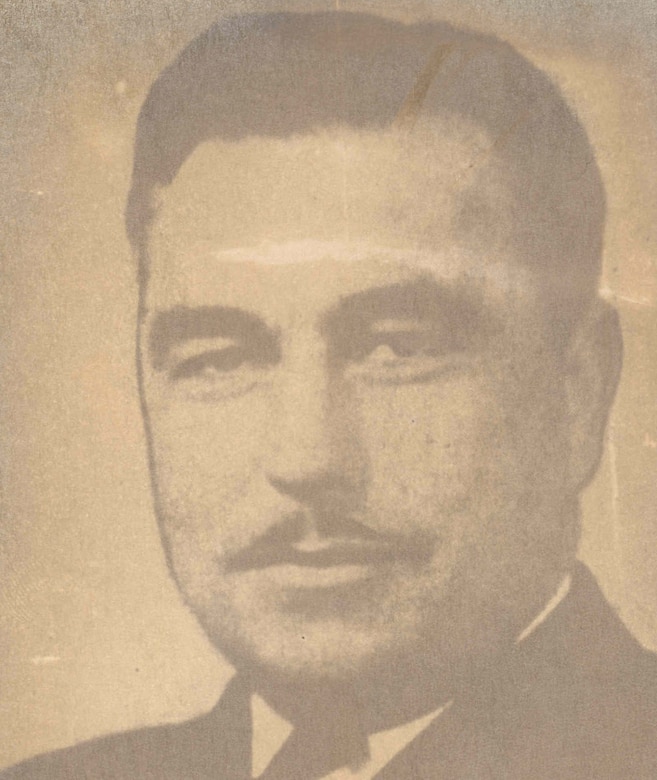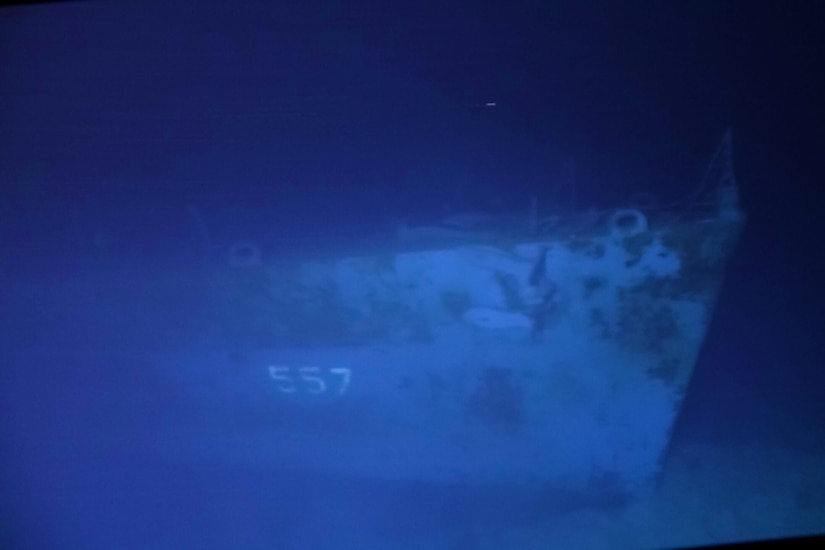The Battle of Leyte Gulf, which helped the Allies recapture the Philippines during World War II, is one of America’s greatest naval triumphs, thanks in large part to Navy Cmdr. Ernest Evans. Evans, who led the battle’s biggest engagement, went down with the USS Johnston; the ship’s wreckage was recently found more than four miles below sea level.
Based on that discovery, we thought it appropriate to highlight Evans, a Medal of Honor recipient who gave it all for the greater good.

Evans was born on Aug. 13, 1908, and lived with his sister and parents in Muskogee, Oklahoma. He was three-quarters Native American and grew up where tribes had been massacred by the Army just a generation before, so life wasn’t easy. He experienced prejudices common to that era, which made his desire to serve his country after high school all the more impressive.
Evans initially wanted to be a Marine Corps officer, but he was denied entry to the Naval Academy due to a knee injury. Instead, he enlisted in the Navy. A year later, after winning a fleet competition, he earned the entrance he so desired into the U.S. Naval Academy. Nicknamed “Chief” due to his Native American heritage, Evans graduated in 1931.
Evans spent his first decade of service in San Diego, Pensacola and aboard seven ships. He was serving on his eighth in the East Indies when the Japanese attacked Pearl Harbor on Dec. 7, 1941, thrusting the U.S. into World War II.

Taking Command
Nearly two years later, he assumed command of the new destroyer USS Johnston. At the ship’s commissioning in October 1943, Evans reportedly said to his crew, “This is going to be a fighting ship. I intend to go in harm’s way, and anyone who doesn’t want to go along had better get off right now.”
No one did, and Evans meant what he said. He was known by his crew to be a role model and a rare leader who was calm, fair and gave his men the opportunity to fail so they could learn from it.
All of those lessons were needed on Oct. 25, 1944, during the Battle off Samar, the pivotal fight of the Battle of Leyte Gulf. That day, the USS Johnston and six other destroyers were on escort duty for a few small-deck escort carriers that were protecting Marines on the Leyte beachhead. As the destroyers sat off the coast, they saw the major units of the Japanese fleet on the horizon. The enormous contingent consisted of eight cruisers, about a dozen destroyers, and four battleships — including the biggest one ever built, Yamato. The enemy fleet had supposedly been heading out of the area, but it changed direction overnight and surprised the smaller U.S. fleet.

Evans knew they had to defend the carriers and aircraft protecting U.S. Marines or retaking the Philippines would be impossible. He also likely knew what he was about to do was a suicide mission.
Regardless, Evans didn’t wait for orders. He commanded the crew to begin a torpedo run. Followed by three other destroyers, the Johnson was the first to lay a smoke screen and open fire at the massive enemy fleet bearing down on them.
A Herculean Effort
The Johnston was able to draw fire away from the carriers, directly taking hits from three powerful 14-inch guns. Evans was undaunted by the damage and had his crew inflict its own. The Johnston shot off all 10 of its torpedoes and more than 200 rounds from its 5-inch gun, sinking a Japanese heavy cruiser. It also provided fire support for other ships in the group as they launched their torpedoes.
“His devotion to protecting the Marines fighting onshore went beyond providing them cover with the allotted amount of ammunition,” said Sam Cox, a retired rear admiral and director of the Naval History and Heritage Command. “He often ordered his ship in so close to shore it was hit with small-arms fire. When Evans demanded more ammunition, he climbed into a wooden gig and motored over to the task group’s flagship to request it in person.”
Evans made sure the Johnston outshot and outmaneuvered the enemy by making repeated runs toward the Japanese fleet, despite being out of torpedoes and low on ammunition. When the ship lost engine power and communications with the steering area, he ran from the disabled bridge to the back of the ship and shouted through an open hatch to turn the rudder by hand.
After three hours of intense combat, the burning, shuddering Johnston could do no more. Surrounded by the enemy, a seriously injured Evans gave the order to abandon ship. The Johnston sank soon after, taking with it 186 members of the 327-man crew, Evans included.
In the end, three other American ships sank that day — escort carrier USS Gambier, destroyer USS Hoel and destroyer escort USS Samuel B. Roberts — taking a heavy toll on American lives. But the physical and psychological damage they inflicted won the day. The enemy fleet’s commanders, who had lost two cruisers in the battle, thought they were fighting a much larger force than they were, so they turned back from the fight. Japan’s maritime might was massively diminished that day, and it never regained strength.
Winning Comes at a Cost
Evans’ orders, along with the actions of the crews of the other destroyers and escorts, gave the U.S. carriers much-needed time to protect Marines on the beachhead. This led to the eventual retaking of the Philippines more than two years after it fell to the Japanese.
Tales about the heroics of the ships and crews involved in the Battle of Leyte Gulf could be told for days. (“The Last Stand of the Tin Can Sailors” by James D. Hornfischer offers an in-depth account.) But much of the credit went to Evans.
On Sept. 28, 1945, not long after World War II ended, the 17-year Navy veteran earned the Medal of Honor. It was presented to his wife, Margaret, in San Pedro, California, during a ceremony that his mother, sister and sons Jerry and Ernest Jr. also attended.
Evans was the first Native American to earn the Medal of Honor and one of only two World War II destroyer captains to attain it.
Evans was initially listed as missing in action before being declared dead. His name is inscribed on the Walls of the Missing at Manila American Cemetery in the Philippines with the names of 36,286 Pacific fighters who were never heard from again. According to the American Battle Monuments Commission, the cemetery contains 17,184 graves — the largest number of graves of U.S. military dead of World War II.
To honor Evans’ life, the Navy named a destroyer escort commissioned in 1957 for him.
What’s Lost Is Found
Evans’ body was never recovered, but a recent discovery has brought his name back into the spotlight.

Earlier this month, explorers announced they had officially identified the wreckage of the USS Johnston, releasing new images that clearly show the ship’s hull number, 557. The wreckage was first located on the edge of an undersea cliff in October 2019. Its bow was later located 21,180 feet deep.
At more than four miles below sea level, it’s now considered the deepest shipwreck ever discovered.
The tech company that found and confirmed the wreck, led by retired naval officer Victor Vescovo, is working to provide the Navy with all the sonar data, images and field notes collected by the expedition.
Vescovo said he’s proud to help bring clarity and closure to the Johnston, its crew and the families who were forever affected by the ship’s loss.
